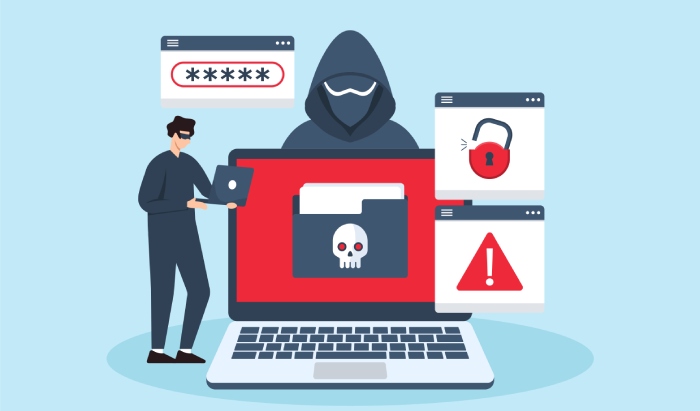- Vulnerability Identification: Cybercriminals discover a weakness in software or hardware that is not yet known to the vendor or cybersecurity experts.
- Exploit Creation: They then develop harmful code or strategies aimed at taking advantage of this vulnerability.
- Execution of the Attack: The exploit is activated through methods such as phishing emails, harmful websites, compromised software updates, or other means of delivery.
- Consequences and Exploitation: Attackers secure unauthorized access, steal sensitive data, or cause disruptions before the vulnerability can be identified and remedied.
- Unawareness of Vulnerability: Because the flaw is not yet recognized, standard security solutions, such as antivirus programs and firewalls, might not provide adequate protection.
- Attractiveness to Cybercriminals: Taking advantage of a zero-day vulnerability allows attackers to gain unauthorized access to critical systems or confidential information.
- Risk of Extensive Consequences: When the compromised software has a large user base, a zero-day attack can potentially affect millions of devices around the world.
What Is A Zero-Day Attack?A Guide To
Understanding &Mitigating Cyber Threats
Understanding &Mitigating Cyber Threats
In the constantly changing field of cybersecurity, it is vital to remain proactive against cybercriminals. One of the most dreaded dangers in the online world is the zero-day attack. These assaults take advantage of software flaws that are not yet recognized by developers or the public, rendering them highly perilous and challenging to counteract. For organizations aiming to uphold strong security measures, it is imperative to comprehend the nature of zero-day attacks, their mechanisms, and strategies for their prevention. Explore this webpage to find additional details.
What is a Zero-Day Attack?
A zero-day attack is a type of cyber intrusion that takes advantage of vulnerabilities in software, hardware, or firmware that are either unknown or have not yet been fixed. The phrase "zero-day" indicates that developers have no time to address the flaw before it can be exploited. In contrast to known threats, which can be mitigated with existing security protocols, zero-day attacks are particularly dangerous due to the absence of any prior defenses.
These vulnerabilities can be found in various components, including operating systems, web browsers, applications, and hardware devices. When cybercriminals identify these weaknesses before developers are able to create patches, they can execute severe attacks that may compromise systems, steal confidential information, or disrupt operations.

How Zero-Day Attacks Work
Zero-day attacks typically unfold in a predictable sequence:
The rapidity with which these attackers can take advantage of newly found vulnerabilities underscores the necessity for swift detection and response measures.
Why Are Zero-Day Attacks Dangerous?
Zero-day attacks pose significant threats for a variety of reasons:
Mitigating Zero-Day Attacks
To successfully address zero-day attacks, it is essential to implement a strategy that involves multiple layers of defense.
1. Implementing Strong Security Practices
It is crucial to promptly update and apply patches to systems as soon as they are released. Furthermore, adopting security models such as Zero Trust Architecture can help reduce the impact of potential attacks. Regularly assessing and improving security policies is vital for organizations to stay robust against new threats.
2. Using Intrusion Detection Systems (IDS) & Intrusion Prevention Systems (IPS)
Sophisticated Intrusion Detection Systems(IDS) and Intrusion Prevention Systems(IPS) technologies are capable of identifying atypical behaviors that could suggest a zero-day vulnerability, enabling companies to take prompt action. Keeping these systems updated frequently improves their ability to detect such threats.

3. Employing Behavioral Analysis
Utilizing artificial intelligence and machine learning to analyze network traffic and user activity can aid in spotting irregularities indicative of a possible zero-day attack. Regularly updating the algorithms enhances detection accuracy and reduces the occurrence of false positives.
4. Enhancing Email Security
Phishing emails frequently serve as a pathway for zero-day attacks, making it essential to implement strong email security measures such as DMARC, SPF, and DKIM. Consistent oversight of these protocols is vital to maintain their effectiveness over time.
5. Conducting Penetration Testing
Conducting regular penetration tests is essential for identifying weaknesses in systems before they can be targeted by malicious actors. By adhering to a consistent testing timetable, organizations can quickly detect and resolve any newly emerged vulnerabilities.